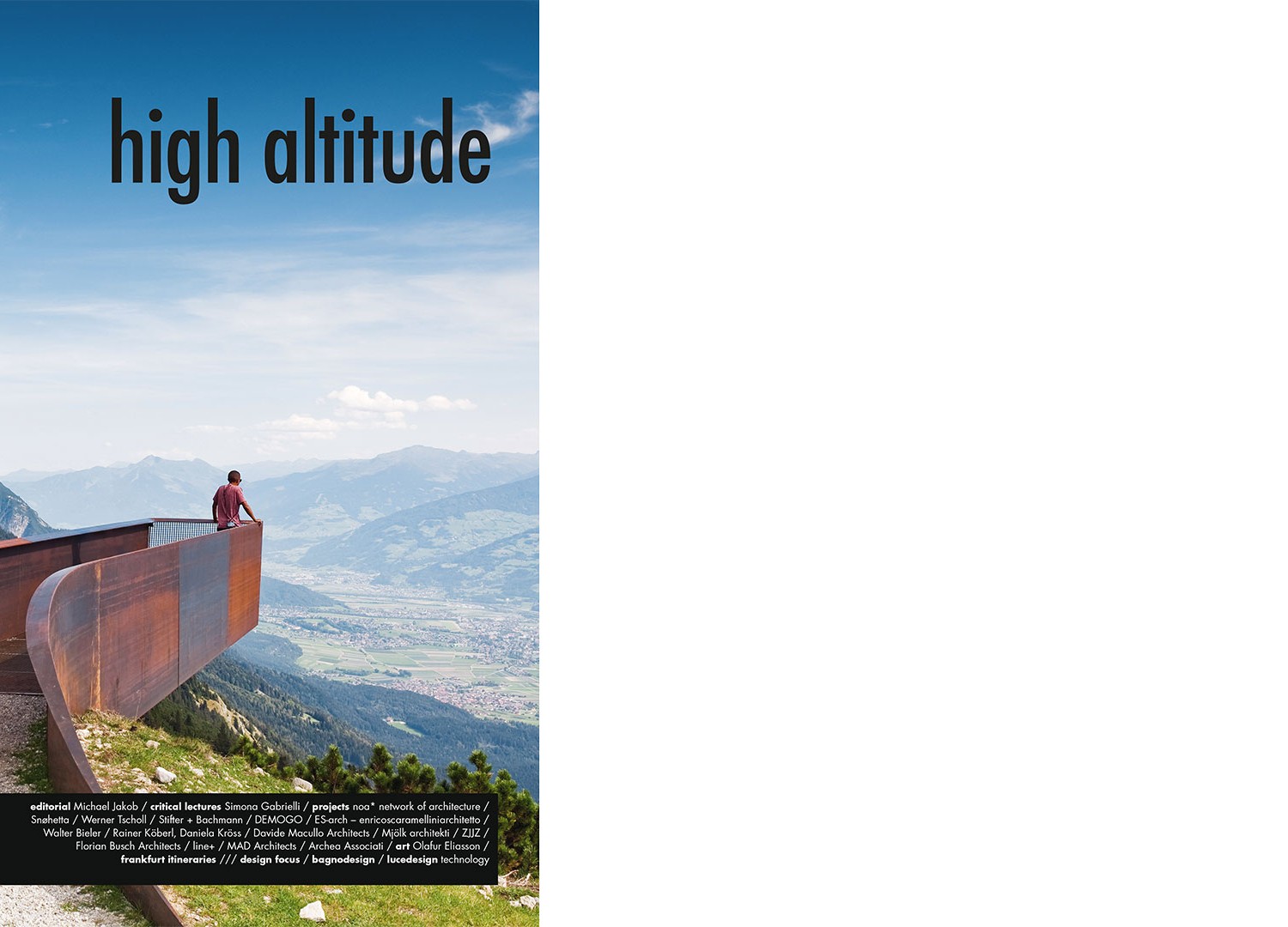
International magazine of architecture and project design july/august 2021
Leaning against the mountains
There is a characteristic that is common to all mountain architecture, defined as “alpine” wherever it is located in the world, just because of the distinct traits of the landscape, that those who travel or live in it experience, generally, as a tendency to lean, discretely, on the rock. In all likelihood this is a sort of counterpoint between the presence of a hard, heavy, immanent, sharp, naturally stony material and the consistency of the trees and their trunks, always in a precarious vertical balance as if in hope of challenging the slope, and of the snow that melts and changes in volume with the changing seasons, the wind and sun that alternate against the fixed scenario that, on the contrary, changes at the slow pace of the geological eras. Perhaps it is this dialectic of opposites that determines a condition of supposed instability. It is an environment that is hostile to mankind and its need to survive, a place where passage, rest and refuge appear to be an intrusion, barely tolerated, a casuality that tends to make the architect watchful and suspicious, forced to seek that detachment from the earth that sometimes resembles the awkward scramble of the mountain goat without ever succeeding to actually take off in flight or, challenging gravity, to ever win. These are dreams that men, without the aid of technology, can never attain. This is why mountain architecture appears light even when built of stone, and behaves discretely in the manner of wood, even when it is massive. And though the foundations may barely scratch the rock, the roofs are steep or slippery to support the weight of frozen water. It should be noted, however, that just because of the great difficulty attached to them, the works often become more self-aware, measured, intelligent, and that, forced to take account of a nature it is unable to dominate, every human activity acknowledges its temporary status, behaving like the guest of a generalized park which is, vice versa, the exception in urban contexts. For this reason graphism, calligraphy, style, chromatic exceptions are rare in an environment that imposes balance, good sense, the ability to measure oneself necessarily with the context – a healthy practice that is often more easily forgotten in the cities – knowing how to listen, interpret and offer a reading that is obviously at the service of contemplation. This is what the landscape asks of us, while allowing us to admire and visit it, but always with respect and discretion. Otherwise it rebels, and when that happens it can rely on the imponderable powers of nature against which man, for good or ill, has no recourse.
Marco Casamonti
Download cover
Download table of contents
Download introduction of Marco Casamonti
Download “New Thermal Centre” – Archea Associati


